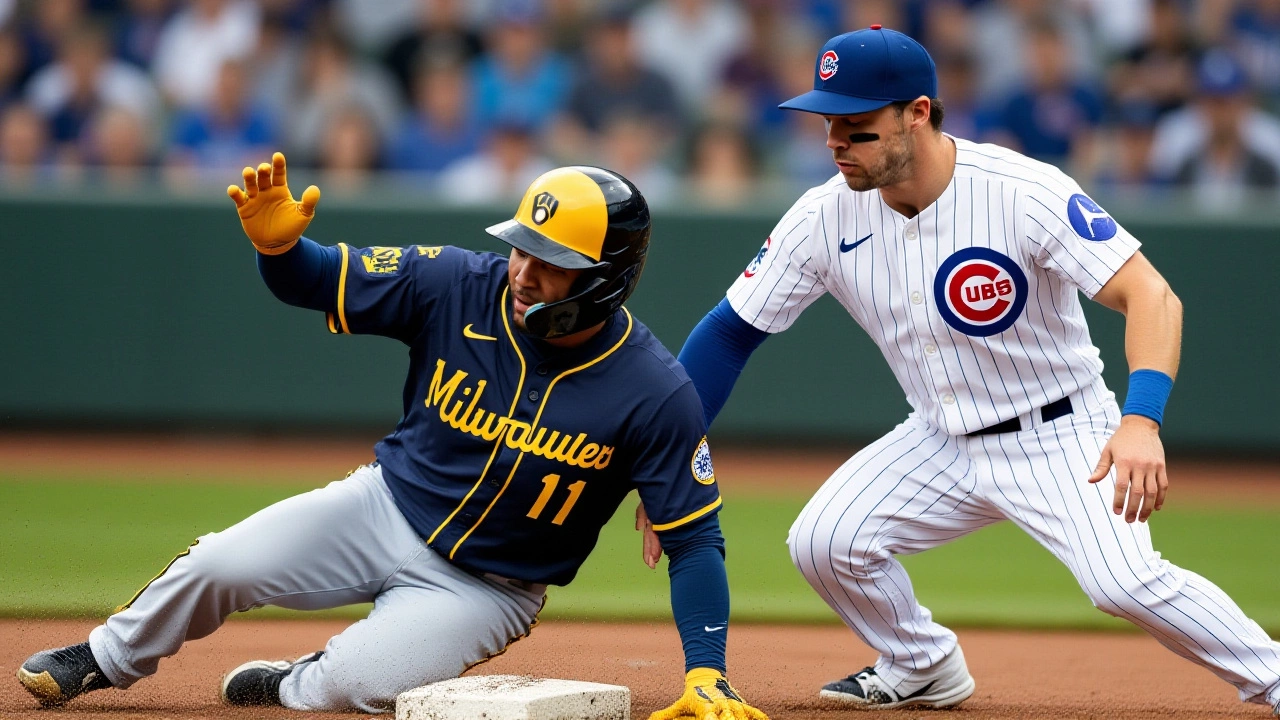When the Chicago Cubs clinched their wild‑card win over San Diego on Oct. 3, 2025, the baseball world got a fresh reminder: the NL Central is finally back on the big stage. Milwaukee Brewers have already locked up the top seed, and now the two division rivals will clash in a best‑of‑five NLDS that feels part revenge drama, part statistical showdown.
Game 1 drops Saturday, Oct. 4, 2025, at American Family Field in Milwaukee. Betting odds from DraftKings Sportsbook list the Brewers at -135 and the Cubs at +115 – essentially a pick‑em, but the numbers hint at Milwaukee’s slight edge. Here’s why this series matters more than a few runs on a scoreboard.
Historical Context: When Central Rivals Meet
The NLDS matchup marks the first postseason meeting between the Cubs and Brewers since both teams entered the division in 1995. The last time an NL Central team made the NLCS was the 2019 St. Louis Cardinals, and that drought has left fans hungry for a regional showdown. As ESPN’s MLB analysts point out, a Brewers‑Cubs series guarantees a Central club in the NLCS for the first time in six years.
For Chicago, it’s a return to the NLDS after an eight‑year absence; the last time they advanced that far was in 2017, when they fell to the Dodgers. The Brewers, meanwhile, are riding a historic regular season – the best win‑percentage in the majors (102‑60) and the third‑most runs scored (806). Their small‑ball tactics, leading to a league‑leading 1.33 walks per nine innings, have steadied a lineup that blends power with patience.
Series Preview: Pitching Matchups and Key Players
Both benches will have to get creative. The Brewers will be without ace Brandon Woodruff, who’s nursing a forearm strain. That opens the door for a stacked rotation that includes Freddy Peralta. In their four regular‑season meetings with Chicago, Peralta went 3‑1 with a 3.43 ERA over 21 innings, striking out 26 while serving up 12 hits. “We’ve got confidence in our guys,” Brewers manager Pat Murphy said in a post‑game press conference, “but the Cubs are cunning. We’ll have to mix pitches and keep them guessing.”
On the Cubs side, Jameson Taillon earned the win in Game 3 of the wild‑card series with a four‑inning burst of two‑hit, zero‑run baseball. “I wanted to attack early and let the bullpen finish the job,” Craig Counsell – who previously managed Milwaukee – explained. The reliance on early‑inning strikeouts could be a decisive factor, especially given Chicago’s 1,371 hits (11th‑most in MLB) and a .320 on‑base percentage, the league’s 10th‑best.
Betting Odds, Predictions and What the Numbers Say
- Brewers win series: 56.2% (ESPN simulation)
- Cubs win series: 43.8% (ESPN simulation)
- Run line: Brewers -1.5 (average run differential 1.2 in the regular season)
- Key prop: Total runs over/under 9.5 (average combined runs 8.9)
Those percentages illustrate a close contest – think of a 60‑40 pizza split, not a full‑on dominance. The Brewers’ run production is impressive, but Chicago’s ability to string hits together, especially against left‑handed pitching, adds a wrinkle.
Broader Implications: Why This Series Echoes Beyond Milwaukee
Beyond bragging rights, the winner gets a clear path to the NLCS, where the opponent could be a powerhouse like the Los Angeles Dodgers or a dark horse such as the Arizona Diamondbacks. A Brewers win would cement their 2025 campaign as the best regular season turned postseason champion in the NL Central era. Conversely, a Cubs triumph would signal a resurgence for a franchise still haunted by the 2016 World Series heartbreak.
For the league, a Central NLCS matchup could boost regional TV ratings, especially in the Midwest where baseball viewership has plateaued. Advertisers are already lining up spots, anticipating a “Midwest showdown” narrative. The ripple effect might even influence future scheduling, with MLB eyeing more intra‑division playoffs.
What’s Next: Looking Ahead to Game 2 and Beyond
Game 2 heads back to Wrigley Field on Oct. 5, giving the Cubs a chance to even the series. If Chicago can leverage its on‑base skills against the Brewers’ bullpen, the series could flip into a true five‑game battle.
Meanwhile, the Brewers will likely lean on their depth – think Corbin Burnes in a potential relief role or a spot start from a left‑handed swingman. The strategic chess match between Craig Counsell and Pat Murphy will be the storylines fans tweet about at 2 a.m., and it’s a narrative that could define both of their legacies.
Frequently Asked Questions
How does this NLDS affect the Cubs' chances of winning the World Series?
If Chicago can pull off a win against the top‑seeded Brewers, it would prove they can beat elite pitching – a vital confidence boost heading into a potential NLCS against teams like the Dodgers. Historically, teams that upset a higher seed in the NLDS improve their World Series odds by roughly 12% according to MLB analytics.
What key injuries could change the outcome of the series?
The Brewers are already missing ace Brandon Woodruff. If starting pitcher Corbin Burnes aggravates his hamstring, Milwaukee would have to rely heavily on depth arms like Brett Anderson. For Chicago, a left‑handed reliever in the bullpen, Ian Anderson, is listed as day‑to‑day after a shoulder strain.
Who has the statistical edge in head‑to‑head matchups this season?
The Brewers hold a 5‑3 regular‑season edge over the Cubs, winning five of their eight meetings. Pitcher Freddy Peralta posted a 3.43 ERA against Chicago, while the Cubs’ offense averaged 4.6 runs per game versus Milwaukee’s pitching staff.
What are the betting markets saying about the series length?
Odds for a five‑game series sit at about +210 on most sportsbooks, indicating roughly a 32% probability. A three‑game sweep is priced at +550, reflecting the unpredictability of a pick‑em series where home‑field advantage isn’t overwhelming.
Why does this matchup matter for the future of the NL Central?
A Central‑vs‑Central NLDS revives regional rivalries that have dwindled since the league’s 2012 realignment. A successful run by either team could increase franchise valuations, attract free agents, and encourage MLB to consider additional intra‑division playoff spots in the long term.

